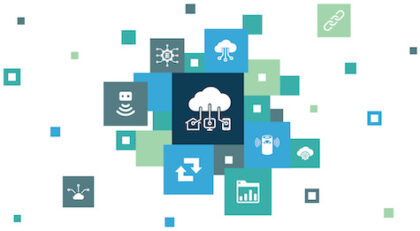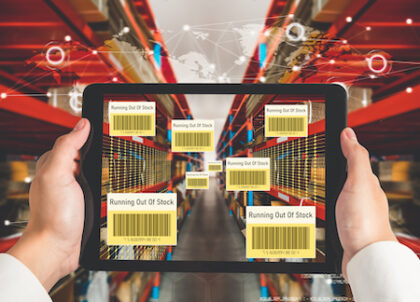Implementing Internet of Things Technology for an Effective Data Management Strategy
The emergence of the Internet of Things (IoT) has significantly altered how we gather, handle, and analyze data. Understanding and exploiting this wealth of data is essential for technology enthusiasts eager to discover the limitless possibilities of today’s high-tech devices, because so many of them are already networked and interconnected, gathering various data sets.
In order to fully benefit from an IoT strategy, monitoring and analyzing data across linked devices has become an important endeavor. Businesses that have an IoT strategy in place could use the potential of smart devices to gather enormous volumes of data, which can then be analyzed to gain insightful knowledge and make correspondingly smart decisions.
But as fascinating as it is, there’s one critical domain of IoT that often goes unnoticed: Internet of Things data management. With more devices comes more data. And if not managed well, this data can become an overwhelming force. In this article, I will deep dive into how to wield IoT technology for an effective data management strategy.
Streamlining IoT Data Management
The first step in IoT data management is centralizing the numerous data sources. Think of your data sources as a vast sea of information. To navigate this sea of data effectively, all the streams and tributaries leading into it need to be clearly mapped and unified. This means integrating your IoT devices with a single platform or system that can manage and interpret data from various sources.
The sheer volume of data generated by IoT devices can be overwhelming, and without proper management, it can quickly become a burden rather than an asset. To streamline data management with IoT, consider the following:
Cloud Computing
Cloud computing offers scalable and flexible solutions for managing IoT data. It provides a centralized platform where data from different devices can be stored and analyzed efficiently. This centralized approach is advantageous in terms of accessibility and resource management, allowing developers and tech enthusiasts to access data from anywhere, anytime.

Ensuring effective communication across various IoT-enabled devices, including sensors, wearables, appliances, and more, is a key component of managing data across devices. This necessitates putting in place reliable networking systems and protocols that allow for smooth data synchronization and transfer.
Edge Computing
In contrast, edge computing processes data closer to where it is generated, i.e., at the “edge” of the network. This localized approach reduces , improves response time, and alleviates the load on the network, making it a preferable strategy for real-time applications. Employ edge computing to process data closer to the source, reducing latency and bandwidth requirements.
IoT’s power lies in its real-time data generation. Ensure your systems can take immediate action based on this data. For instance, if an IoT sensor in a factory detects a machine overheating, it should instantly trigger safety protocols.
Managing this wealth of data requires robust systems and infrastructure that can handle the volume, velocity, and variety of information generated by connected devices. IoT data management techniques such as cloud computing and edge computing play a crucial role in ensuring that data is securely stored, processed, and analyzed in a timely manner.
Delving into Data Analysis
Data analysis is at the core of extracting value from IoT. Through sophisticated analytical tools and algorithms, IoT implementers can unearth patterns, trends, and insights that can drive innovations and optimize processes. Where possible, implement automated insight-generation tools. These can quickly identify patterns or anomalies in the data without human intervention, speeding up decision-making.
Predictive Analytics

IoT provides the potential for predictive analytics like never before. By examining the patterns and trends in the data your devices generate, you can predict future outcomes. For instance, if you’d like to implement IoT as the driving force in a “smart home,” a smart fridge can predict when you’ll run out of milk based on your consumption patterns!
Furthermore, IoT-enabled smart devices offer numerous use cases across various industries. For example, in healthcare settings, wearable devices can monitor patient vitals in real-time and transmit this information to healthcare professionals for timely intervention. In manufacturing environments, IoT sensors embedded in machinery can collect performance data to predict maintenance needs or identify potential bottlenecks.

By harnessing the power of IoT analytics tools, organizations can gain a deeper understanding of user behavior patterns, optimize processes, improve efficiency, and enhance customer experiences. When putting an IoT plan into practice, security issues should be addressed first and foremost. Implementing robust security measures is crucial to thwart potential cyberattacks because numerous connected devices transmit sensitive data.
The use of artificial intelligence (AI) and machine learning (ML) in analyzing IoT data is pivotal. These technologies enable anomaly detection and data visualization in line with predictive analytics features, which are crucial for making informed decisions.
Key Components of Effective Data Management with IoT Strategy
In this section, I’ll walk you through the most important elements of efficient data management in an IoT environment.
First, data integration platforms are essential. They enable the efficient gathering and consolidation of information from various sources, ensuring smooth communication between different devices and systems. With these platforms, analyzing data and deriving insights becomes more straightforward due to the unified view they offer.
In addition, data analytics tools are vital for extracting meaningful insights from data produced by IoT. These tools sift through large volumes of data with sophisticated algorithms and techniques, identifying patterns, trends, and irregularities. This empowers businesses to make informed choices grounded in real-time information.
Another crucial aspect is device connectivity protocols. These protocols define how IoT devices communicate with each other and with backend systems. Choosing the right protocol ensures reliable and secure transmission of data while also considering factors such as power consumption and bandwidth requirements.
Lastly, security measures are paramount in IoT data management. With sensitive information being transmitted across networks, it’s essential to implement robust security measures to protect against unauthorized access or breaches. This includes encryption techniques, access controls, authentication mechanisms, and regular security audits.
IoT Strategy Blueprint
Organizations could streamline smart devices into their operations by employing an IoT strategy, therefore building a network of interconnected systems. This paves the way for instantaneous information gathering, processing, and decision-making. To take advantage of all that can be accomplished with networked devices, a solid IoT strategy must be developed first.
A well-executed IoT strategy doesn’t just appear out of thin air, however; it’s a meticulous plan backed by a structured blueprint. We’ve already skimmed the surface in the preceding discussion, but let’s now dive deeper into the intricacies of the IoT strategy blueprint to ensure you’re fully equipped to handle the future. A well-thought-out strategy should encompass the following:
Clear Objectives
Defining what you want to achieve with IoT is foundational. Whether it’s improving efficiency, enhancing user experience, or innovating products, having clear goals will guide the implementation process.
Understand what you aim to achieve with your IoT initiative. Is it improving efficiency? Better customer service? Clearly defined goals will guide your strategy. Instead of just having a broad objective like “improve efficiency,” aim for specific targets. For example, “achieve a 20% reduction in energy costs through smart thermostats within a year.”
Your IoT initiative should be in harmony with your overall business strategy. If your primary business goal is to enhance customer satisfaction, your IoT devices and the data they collect should work towards achieving that.
Security Considerations
Given the sensitive nature of data handled by IoT devices, implementing stringent security measures is imperative to protect against unauthorized access and cyber threats. This emphasis on safeguarding information becomes even more pronounced in the context of IoT, where vast amounts of data flow continuously.
Device-level security is critical. Check that the IoT devices you choose have strong security mechanisms in place. Prioritize data security by establishing encryption, authentication, and access control techniques to safeguard data from unwanted access.
Integration and Compatibility
Once the data has been collected, it should be integrated into your current systems. To achieve a seamless connection, specialized solutions or may be required. It is critical to ensure that new IoT systems interface easily with existing infrastructure and are interoperable with other devices in order to minimize operational interruptions.
Many IoT devices communicate via (application programming interfaces). Ensure you have a robust API management system to seamlessly connect these devices to your central system. Also, consider tools like or middleware platforms that can aid in data translation, making it comprehensible and usable for your existing systems.
Scalability and Flexibility
Lastly, any IoT strategy worth its salt should be forward-looking. What works today might be obsolete tomorrow. As technology advances, the number of connected devices is bound to increase. Strategies should not only accommodate this growth but also evolve with it. This requires a data management approach that’s both scalable, handling the surge in data volumes, and flexible, adapting to the latest technological trends and changing requirements.
Technology and objectives evolve. Regularly review your IoT data management strategy to ensure it remains relevant and effective. An IoT strategy should be scalable to accommodate the growing number of devices and flexible enough to adapt to evolving technologies and changing needs. Ensure your data management infrastructure can scale horizontally to accommodate increasing data volumes as your IoT ecosystem grows.
The convergence of multiple devices in the IoT ecosystem is a testament to the boundless possibilities that this technology holds. For technology enthusiasts keen to delve into the intricate configuration of today’s high-tech devices, understanding and leveraging IoT strategies are critically important.
By streamlining data management, delving into data analysis, and implementing key components effectively, you can harness the full potential of IoT data. Use the IoT strategy blueprint as a roadmap to guide your journey toward more efficient and informed decision-making with IoT data management.
Lastly, always bear in mind that an IoT strategy is dynamic. As IoT devices continue to expand and evolve, so should your blueprint. Remember, the key to an effective IoT strategy lies not just in the collection of data but in how you integrate, analyze, and act upon this data. Embrace the future, but do so with a well-thought-out plan in hand.
